Last week I stumbled upon this article, and tweaking my decks to better fit this template has made them run SO MUCH smoother. Of course I wasn’t running enough lands, and my curves weren’t as tight as they could be.
The idea behind this template is to curve out the best you can, with the assumption that games end at turn 7.
The template also assumes that you want to play your commander as fast as possible, which is why there is no spell at the mv of your commander in the curve. This also means that if you play a commander with a mana value of less than 4, you shouldn’t play 2mv-ramp spells (like signets), because it would throw off your curve. If your commander has a mana value of 3, ramping on turn 2 won’t make you cast it faster, so you better spend your mana on something else.
Remember that this is only a template, and it does not cover every possible type of deck. My Aesi landfall deck runs 43 decks instead of the 38 recommended by the template (and should probably run even more), while my Veyran storm deck only runs 31 (but has lots of cheap card draw and plays MDFC cards). For these edge cases I recommend you this article by the same guy, where he explains in more details the formula he used to create this tempate. He also wrote an article about how many color sources you should run to consistently cast colored spells, but none of my decks have more than two colors so I can’t talk to quality of it.
Hope this is as informative to you as it was to me !
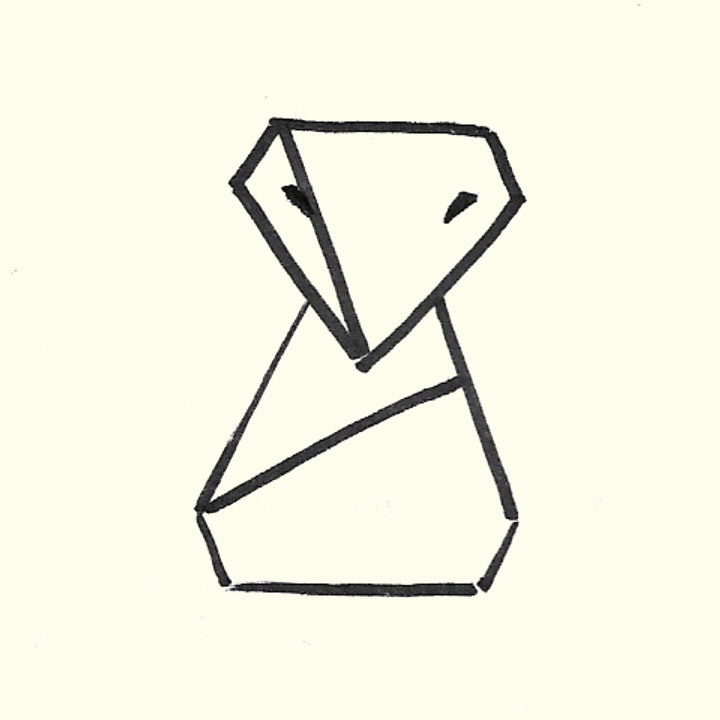
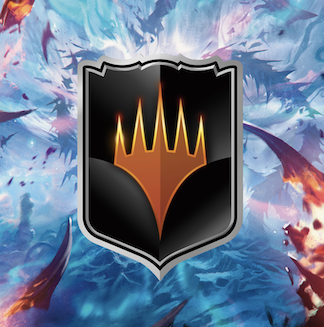
SECOND POST:
My commander costs 4 mana. How many lands and ramp spells do I need to get it out on turn 3? TL;DR: 37 lands and 15 ramp spells at mana value 2 or less.
This short analysis is a continuation to “I’ll just cut a land”: A statistical analysis of lands and ramp in EDH article that was published 7 months ago. Also provocative title: I’m not saying this is the absolute truth but I’m putting forth the idea that every deck does need enough mana sources to play the game. This article discusses 4 mana commanders being cast ahead of curve.
I was building a new deck, helmed by Rosheen Meanderer (scryfall). The thing about Rosheen X-creatures is that I need Rosheen out as soon as possible (turn 3 or earlier). My prior advice was 36 lands and 12 ramp spells (see the other Reddit article) but I was left wondering if that’s enough to get Rosheen out on turn 3. Answer: it’s not.
This time I used a bit more complicated method of simulating the game to turn 2 assuming we’re not playing any draw/loot/filter/rummage spells in the first two turns (which is true for my deck). The “simulation” here is simply to see a decent hand and hope our next two draws are good.
Why turn 2? If you play a Rampant Growth on turn 2 you can still cast your 4-mana commander on turn 3. If your 3rd draw is a Rampant Growth, however, it doesn’t help you at all. Thus we need to cast all our ramp spells by turn 2. This also incidentally means that your ramp at mana value 3 or above doesn’t help you cast your commander at all so you shouldn’t count those towards ramp in your deck when it comes to this analysis. Cultivate is a decent card but exclude it this time.
The math is based on opening hands. Here’s a table of hands and early draws I deemed acceptable:
opening 7 lands opening 7 ramp first 2 draws lands first 2 draws ramp 2 1 1 or 2 0 or 1 2 2 1 or 2 0 3 0 0 or 1 1 or 2 3 1 0 or 1 0 or 1 3 2 0 or 1 0 4 0 0 1 or 2 4 1 0 0 or 1 The philosophy here was that I draw a relatively safe hand and taking the two draws into account we’re looking at 4 mana on turn 3. In other words that’s our “mana target”. There may also be a surplus left over since drawing into 4 lands is not necessarily a bad thing looking into the future. Looking at a 5 land opener can be a good thing but if there’s a ramp spell in it it means we’ve only got one more spells that we can play (7-5-1=1). Doesn’t sound nice to me. But in general I don’t mind an extra land or ramp spell to be cast on turn 4. Feel free to disagree with my “safe” openers.
Obviously we can’t know the future draws so they only act as “weight factors” for each hand. If you draw into a land rich hand with no ramp you absolutely need that one ramp spell. While we’re optimising for a land rich hand by including it in the table we also take into account the fact that there must be a ramp spell in the next two cards which in turn increases the number of ramp spells needed in the deck so they kind of counteract each other.
Think of it this way: 3 lands and 1 ramp is a very, very safe hand. If it can accept any outcome from future draws it’s the “best” opener possible. It gets a weight of 1 because the probability of drawing any (follow-up) card from your deck is always 1. If your hand is 2 lands and 1 ramp spell your hand must draw an extra land to survive - draws with no lands are bad so we exclude them and thus lower the weight of the hand in terms of overall optimisation. This way the math prefers the safest hands and gives them a higher priority.
Here’s a cool heat map. Look at it. It’s amazing. This heat map describes the probability of drawing a good opener and then having two favourable draws on turns 1 and 2. Each cell simply means “probability of happy times”. From it you can see that the optimum is 38 lands and 16 ramp spells but the probability doesn’t decrease significantly if you go to 37 lands and 15 ramp spells (hence the title of the post). This is surprising because the old adage is that your deck should have about 36 lands and 10 ramp spells in it for a total of 46 mana sources (my recommandation in the previous article was 36 and 12 for a total of 48). While it’s close to that you may want to look at your deck critically and think if you need more than 50 sources. If you don’t care about casting your commander on turn 3 then go with something lower. The “midpoint” of the colour scale is set to 85th percentile, by the way. So roughly green is good.
In more detail: each cell takes the probability of finding a particular kind of opener (outlined in the table above) and then multiplies that (the AND condition in probabilities) by the probabilities of good outcomes and then adds all the hands together (the OR condition in probabilities) to produce a single probability table. Each cell has a bunch of multivariate hypergeometric functions (not the simple kind) - it’s a bit cumbersome so if you want more details about this you must contact me directly.
Fun fact: the table contains 11250 calculations where each calculcation has a number that is in the ballpark of 10 billion (American notation; 1010 for the more scientific minded people). It takes a few minutes to render the entire table.
Thank you for reading, hope this helps you somehow! Always take a stranger’s word with a pinch of salt and feel free to disagree in the comments.
Images:
No mulligans, general advice (first post):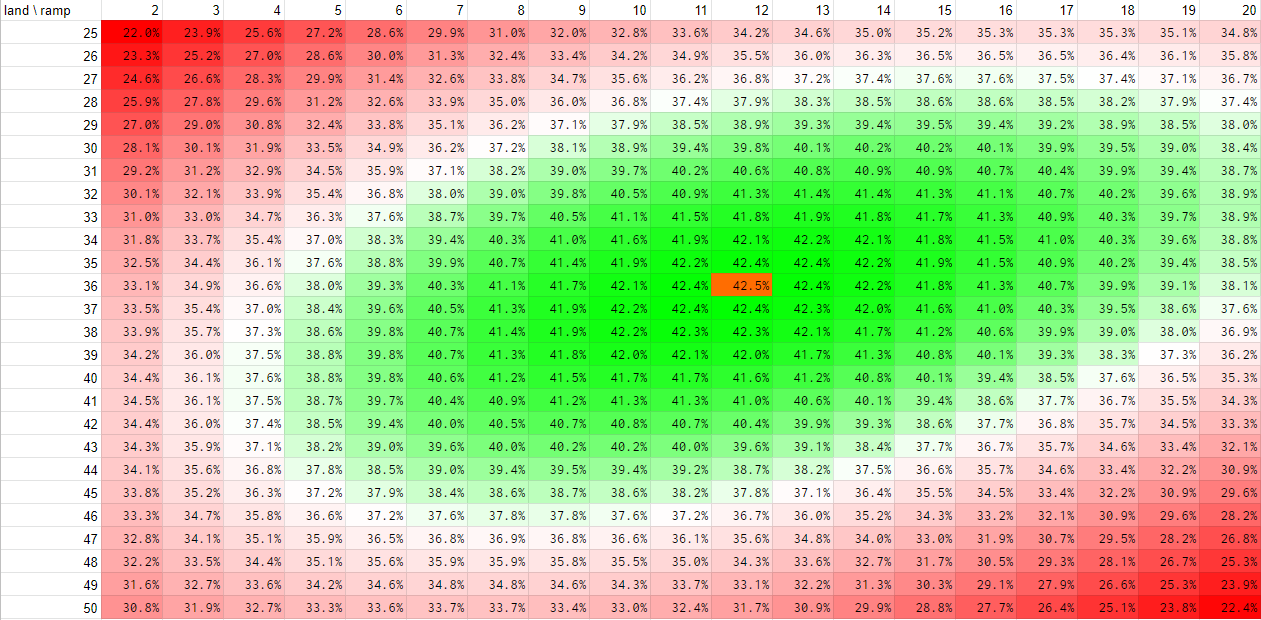
Three mulligans, general advice (first post):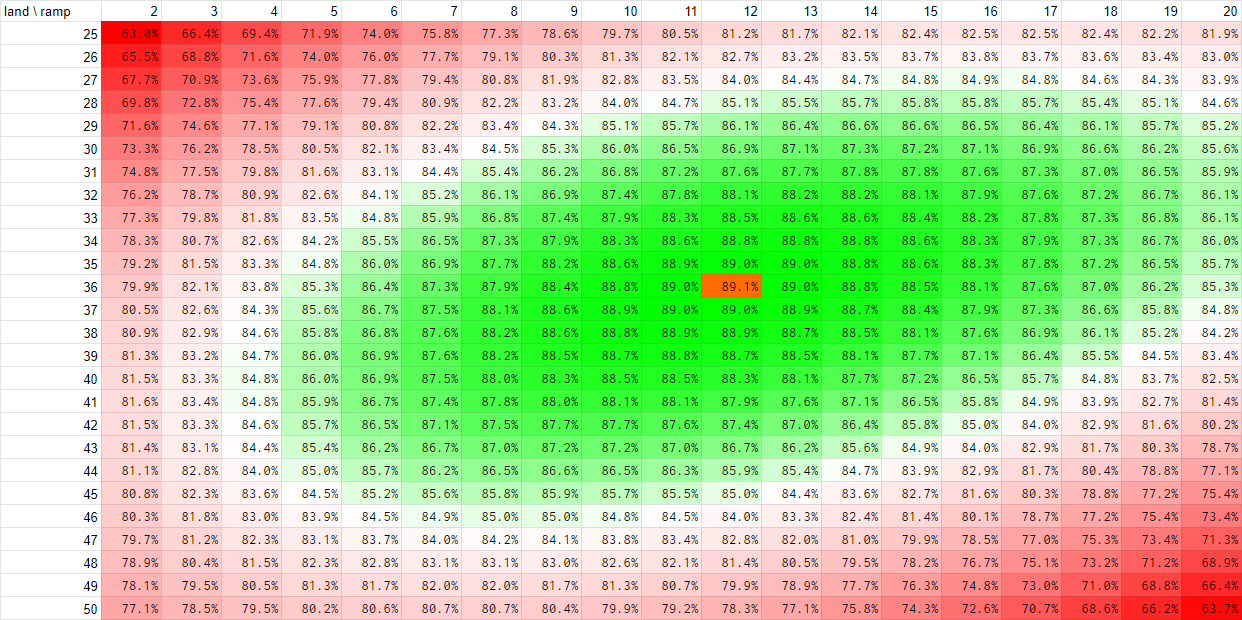
Accepting 4 land hands, general advice (first post):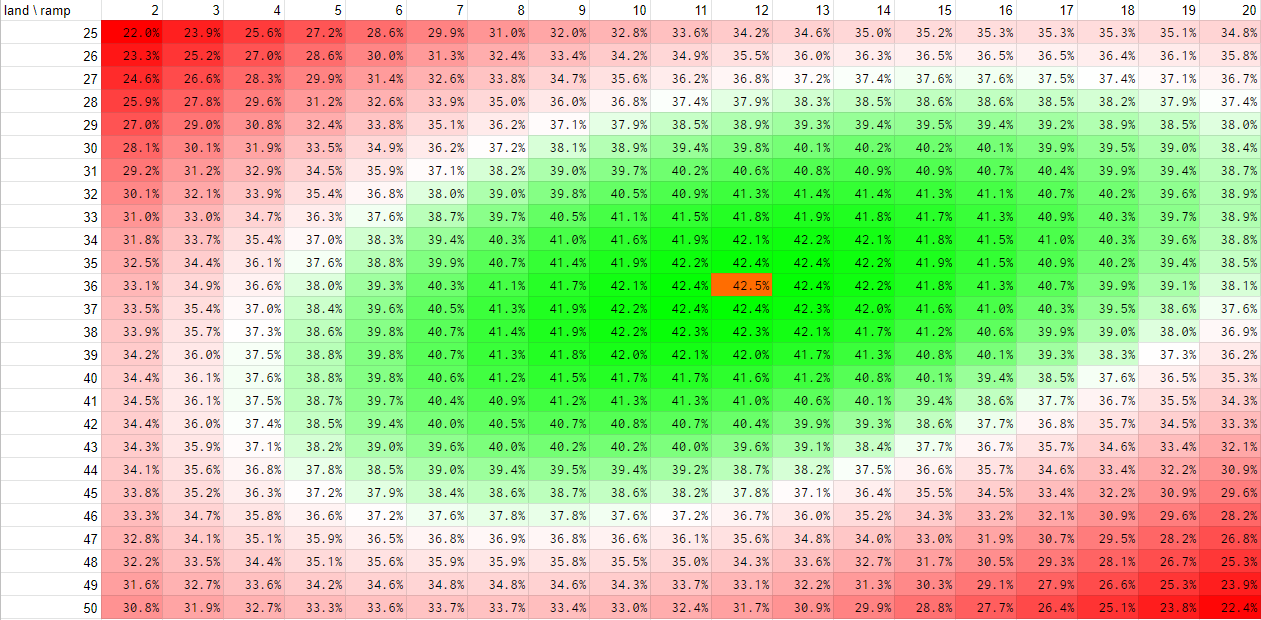
4-mana commander (second post):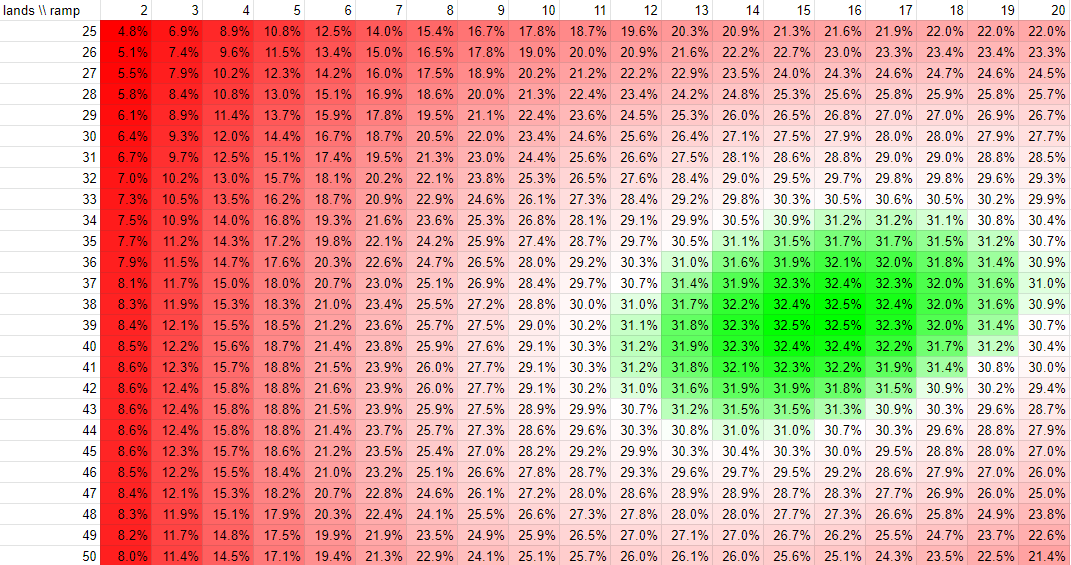
Wow that’s a thorough analysis ! Thanks a lot. It does cover a blind spot of the article, which is that it is based on what people are doing instead of what they should do. I will experiment with your model !
15 cheap ramp spells feels like a tall order if you don’t run green though, especially if you don’t have the budget for mana crypt/mana vault/moxes.
Do you have an idea of how fast the output of your model changes when the average cmc of the deck changes ?
Crap, I wrote a long comment and accidentally closed the tab. Well.
In a nutshell: 15 ramp spells is doable. There are already 15 colourless rocks to fulfill this order.
So the analysis above doesn’t take average mana value into account. It simply looks at the (subjectively) acceptable starting hands and goes from there. You can indirectly manipulate the assumed average mana value by modifying which hands to accept and which to mulligan.
I have experimented with a variable MV setup… But the results are pretty wild. I’ll return to you if I ever get around to doing some more of that. (Yeah, that’s going to be tonight lol.)